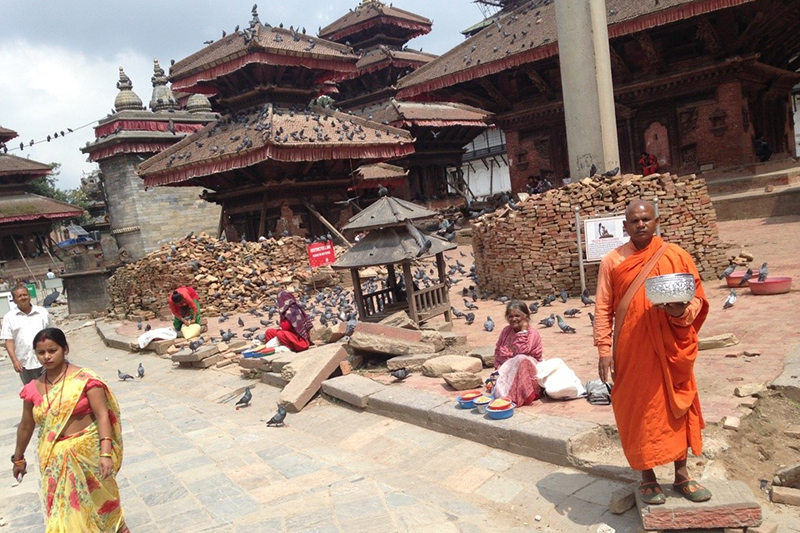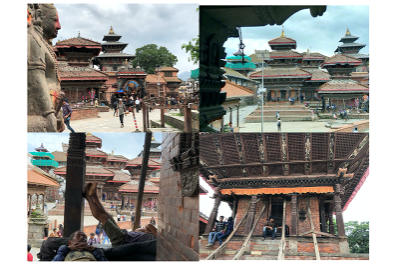Post-disaster space: the altered architecture of Durbar Square, Kathmandu
Heritage is a key component of contemporary urban regeneration policies. Natural disasters are becoming more frequent with far-reaching impact on cities. Natural disaster disproportionately affects lives and livelihoods through the damage they cause on both tangible and intangible heritage. The research is embedded with, and informed by, knowledge-exchange with public bodies and NGOs. The historically-informed and methodologically innovative approach to the post-disaster heritage of the built environment empowers a diverse range of user groups — local councils, public bodies and third-sector `heritage' organizations — to develop a more sophisticated knowledge of the ways in which local communities understand and value the buildings and spaces that they inhabit. A number of heritage advocacy has emerged, for community-led heritage reconstruction, underpinned by my research, leading to campaign changes in the reconstruction policy of landmarks such as Kastamandapa. In addition, there has been spin-off advocacy to save Ranipokhari and Tundikhel for their historic value. The research is widely published in media significantly bolstering heritage awareness in the community. This project led to raising awareness of Kathmandu’s history as part of a broader attempt to re-connect indigenous citizens to the city`s past. The researcher was invited to join the Save Heritage campaign, to guide the long-term future of pro-community reconstruction campaign, across the city and the nation. A single-authored book is currently under preparation titled ‘Decoding Kathmandu’ Edgar Elgar 2021, including two Journal papers.
Royal Institute of British Architects (RIBA) Research Award
BA/Leverhulme Small Research Grants SRG 2015-16 Round – Grant No. SG152355
Forthcoming. Geopolitical meddling, Geopolitical meddling, Governance gaps, and Heritage subjectivities: The perils of heritage-making in the post- disaster reconstruction in Nepal, Environment and Planning C
Forthcoming. (Re)adaptation of historic urban spaces in post-disaster recovery. Cities
2019. Kathmandu locals are fighting ‘injustice’ to save their city’s heritage, years after deadly earthquake April 25, Conversation UK
2018. Ruptured space and spatial estrangement: (Un)making of public space in Kathmandu, Urban Studies, 55(12), pp. 2780-2800.
Shyam Sundar Shrestha / Sweta Amatya
Nepal Engineering College
Changunarayan, Bhaktapur, Nepal.
Phone: +(977)01-5221006
G.P.O. Box: 10210, Kathmandu, Nepal
Christian Manhart
UNESCO, Kathmandu PO Box 14391, Tel: +977-1-5554769
Sanepa-2, Lalitpur
Kathmandu
Nepal
+977-1-5554769
SDG 11: Make cities and human settlements inclusive, safe, resilient and sustainable
SDG 17: Strengthen the means of implementation and revitalize the global partnership for sustainable development
Keywords associated with the Research
-
Heritage, post-disaster, sensory registers, architecture
Further relevant info
- Regressive Planning: “Public space” To “Parking Space”?, New Spotlight Nepal, 1st January.
(Available at: https://www.spotlightnepal.com/2018/01/01/regressive-planning-public-space-parking-space/) - 2017. Diminishing Public Space. ‘Kathmandu Post”, Kantipur Media Group, 24th July.
(Available at: http://kathmandupost.ekantipur.com/news/2017-07-24/diminishing-public-space.html)




